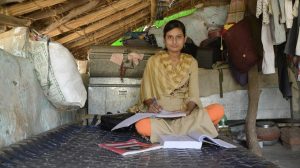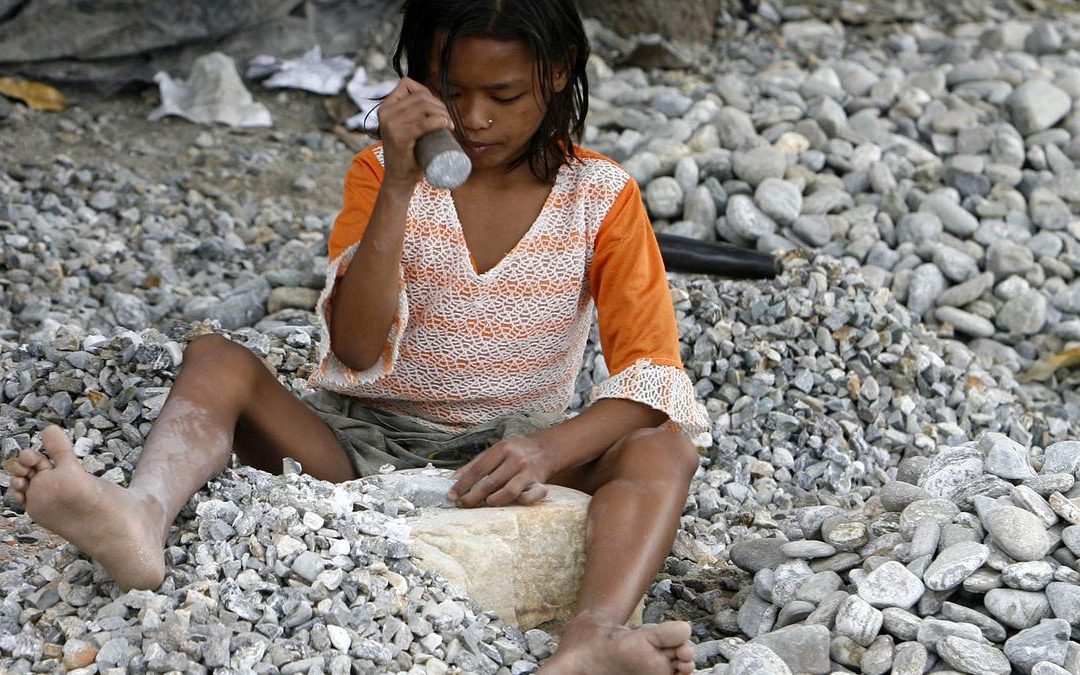How children who once worked in quarries have become agents of change. By Azera Parveen Rahman.
 In 2021, human rights lawyer Amar Lal, 25 (image left), succeeded in taking three cases of child labour to a successful conclusion, by ensuring that the culprits got 14 years imprisonment. “This is a collective win,” he says, as he prepares for his next fight to get justice for another child labourer.
In 2021, human rights lawyer Amar Lal, 25 (image left), succeeded in taking three cases of child labour to a successful conclusion, by ensuring that the culprits got 14 years imprisonment. “This is a collective win,” he says, as he prepares for his next fight to get justice for another child labourer.
Lal is a former child labourer himself; he worked with his father in a stone quarry in Rajasthan since the age of six. Barely able to lift the heavy tools, he would break stones and at times remove debris in a trolley that far outweighed him. For this, he was paid ₹20 a day. “I got lucky when I was rescued by the Bachpan Bachao Andolan [BBA]. And then I became determined to do something for other children in similar situations.”
In September 2022, the International Labour Organization released a report that said 50 million people were living in modern slavery in 2021, of which 28 million were in forced labour. Almost one in eight of these people were children (3.3 million).
Loan trap
The pandemic added to the crisis. BBA, for instance, rescued more than 10,000 children from being trafficked for labour and exploitation during the 15 peak months of COVID-19. On average, the organisation would rescue around 3,000 children every year. According to ActionAid India, loans taken by families working in stone quarries and mines from their contractors spiked during the pandemic, and children were therefore often brought into work to help repay these loans.
The Rajasthan government, in June 2022, became the first State to form a Mine Workers’ Welfare Board. In January this year, a consortium of NGOs working on the issue met the State labour commissioner on the proposed structure and functioning of the board, which is expected to bring relief to workers and their families.
This would help families like Lal’s, or Dinesh Bairwa’s, who is also a former child labourer.
Bairwa was 16 when he had to drop out of school and start working in a stone quarry in Rajasthan to repay his father’s debt. His father, a mine worker, had taken a loan from the quarry’s contractor before becoming bed-ridden. Helped by an NGO, Manjari, Bairwa managed to come out of the trap, complete his studies and is today a field worker in an NGO in Rajasthan.
Both Lal and Bairwa are among a tribe of youngsters drawing from their experiences to fight child labour. Bairwa now conducts workshops and sensitisation campaigns for rural communities on the importance of education: he cites his own example while doing so.
Bright futures
 Child labour often means children stay out of school. But it is not always an easy choice for parents. “When Kailash Satyarthi [the Nobel laureate and founder of BBA] asked my parents to put me in school, they explained that we didn’t have the money; they needed an extra pair of hands to work,” says Tara Banjara of the Neemri village in Rajasthan (image left).
Child labour often means children stay out of school. But it is not always an easy choice for parents. “When Kailash Satyarthi [the Nobel laureate and founder of BBA] asked my parents to put me in school, they explained that we didn’t have the money; they needed an extra pair of hands to work,” says Tara Banjara of the Neemri village in Rajasthan (image left).
Banjara is a former child labourer who, since age seven, would clean roads and remove rubble along with her mother to earn a daily wage of ₹20.
By 10, Banjara, the eldest of eight siblings, would slip out to attend classes at Bal Ashram, a rehabilitation home for rescued child labourers and trafficked children.
About three months after she started attending the school, she came to know that her marriage was fixed to an older man. “I told the didi [teacher] who said there is a law against child marriage. I could go to the police. I spoke to my parents, who finally decided to give in,” she says.
Banjara moved to a government school in Class VIII, becoming the first girl in her village to complete Class XII. She is now studying in a college near her village and has enrolled in coaching classes in Jaipur for the civil services exam.
“I want to become a police officer,” says the confident girl. Inspired by her, many other girls in Neemri village have now started going to school. Banjara has helped stop child marriages in her village and has counselled parents to send their daughters to school instead of pulling them out for work.
Education — and the fact that these children had the support to pursue it — is the reason Lal and Bairwa and Banjara have been able to dream of a bright future, and help others too.
Like them, a group of 30 former child labourers in Bihar and Jharkhand are part of a survivor-led intelligence network for BBA that give tip-offs about potential traffickers of children. Thanks to these survivors, the narrative is slowly changing.
Originally published by The Hindu, 1 February 2023, available here. Cover image: copyright Reuters.

